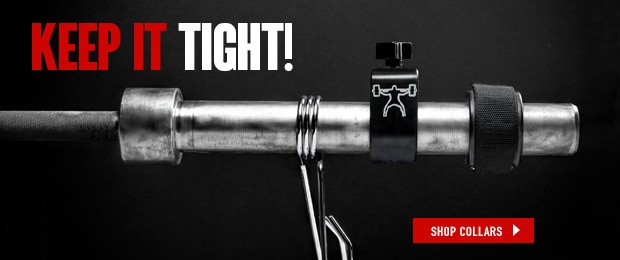
An excerpt from Conjugate U, coming soon to elitefts.com
Over the course of 18 years, I have witnessed the conjugate system outperform many types of periodization and schemes. It’s very hard to objectively evaluate a strength and conditioning system; I get that. One of the indicators that spoke very loudly to me was when we started getting kids achieving things athletically that they shouldn’t have been able to do. The last school I used this system at was in its infancy of even being a Division I institution, not even 15 years into it. Subtract the 10 years of my time there and it had five years as a DI school before we started to implement the system.
RECENT: Full Circuit Athletics and the Role of Strength and Conditioning for Baseball Players
When you’re this young at DI, you are not getting top-tier athletes. After about a year of the system being in place, we were starting to see some surprising performances and some eyebrows were starting to raise. More important than either of these was the great feedback we got from the athletes themselves. This was another moment of validation and reassurance that we were onto something big.
There are many faults in the traditional model of periodization. In the linear model of training, most of the progress you make in the first month is lost by the end of the second month because that particular special strength was not being trained during the second month. Think about this: if you spent your first month doing sets of 10 on squats then did sets of five for your second month, doing a set of 10 at the end of your second month is brutal. If you actually train, you know this to be true. This happens because you have detrained the endurance strength that you built up in your first month. The conjugate model allows us to continually raise multiple strength traits throughout the year without detraining supporting traits that are important for sports.
In the traditional model, athlete burnout is another common problem, because you are doing the same movements over and over. I have seen some models where the movements stayed the same for months on end. If you are honest with yourself, you know you start dreading squat days. A major reason for this is the anxiety of knowing what movement you have to do. So, if you as a strength coach who is supposed to love training feels this way, how do you think your athletes feel? If you are the coach who read that last sentence and then said to yourself, “I don’t care how they feel” then you are out of touch and your athletes are turning on you as you read this.
I can say this because I have witnessed it multiple times. Kids are smarter than we were and you have to treat them as such, otherwise you are setting yourself up for failure. Most of the time, most of your athletes are not really into training unless you can get them to truly buy in. By constantly using the same movements in your programs, you are pushing your athletes away from buying in and increasing their chance for injury and mental burnout. Movement variation is built into the conjugate model. This variation creates athlete buy-in because they are constantly surprised and challenged by the program.
This system is hands down the best system I have witnessed for developing athletes. Much of this conclusion is based on the feedback I received from athletes. I was so confident in its structure that we didn’t have to act like drill sergeants in the weight room and hover over our athletes. Its effectiveness allowed us to teach and let our athletes take ownership of their training, and to let the results speak for them. Most of the time we were able to get very high rates of athlete buy-in because the system allows you to avoid the pitfalls mentioned above.
Recovery is also a large component that is built into a properly run conjugate model, which athletes can immediately feel and appreciate. I also feel this played a big role in our surgery numbers dropping significantly (20% department-wide) the more we were able to put the system into place.
While all of these attributes are great, there is one final piece to a successful weight room program: the coach. YOU have to know how to assess your athlete's lifts and correct them. They can smell your bullshit a mile away, so you’d better know your stuff. It is my belief that this is why you have to train with a system similar to what your athletes are using. I can’t remember where I heard it but someone once said, "If you wouldn’t do your program then it probably sucks.” Training and chasing some goals not only gives you credibility with your athletes, but also gives you a better understanding of how to coach and teach your athletes. All exercises can be corrective if programmed and coached properly. If you can coach a squat, lunge, and various jumps correctly, you will get the proper firing sequence most of the time. Proper and improper coaching can make or break your program, no matter how well-written it is.
Athletes are terribly weak in hips, glutes, hamstrings, back, and core. We can make the biggest impact on their athletic performance by raising these areas up and letting them work on their sport skills. Everyone talks about training and bringing up these areas, but are they really addressing them? Or are they trying to do too much in the weight room by implementing "sport-specific" movements and "drills" when all they have to do is make these areas stronger? These athletes have been doing their sport since they were six years old. How much of an improvement are you going to make by doing more of that? Do your 1/11th and bring up their strength, power output, and mobility, and you'll get to watch their performance take off.
Possibly the greatest attribute of the conjugate method is the fact that it is so simple to implement. If you can learn some basic coaching skills (pay attention when we go over coaching queues in the movements sections) and learn how to direct your training, you can implement it on a large scale. If my dumbass did it, so can you!
In Conjugate U (my book coming soon to elitefts.com), it may feel like a lot of information, but hang in there. It’s important to have all the background information so you can advance when your athletes do. At the end of the book you will see how simple it can be to take your athlete’s performance to a new level.











On a different note, am I the only one wondering where the spotters were on the squat vid?
We had a person on each side. The person on the right was out of the frame...looking at their cell phone lol
The system is very applicable to the high school setting as well Dustin!
Follow my instagram for updates Nateharvey2600